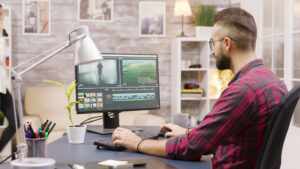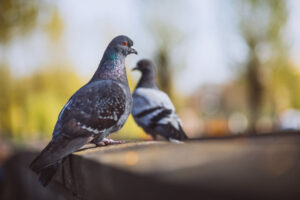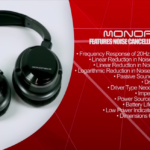How To Shoot, Edit & Produce A Short Film Entirely On Your iPhone
Now that more than a few famous movies have been shot on iPhones, you have no excuse not to give it a try yourself. Moviemaking has become so accessible that you can edit the film on your phone. But of course, the question is where to start. And while we can’t write your script for you, we can tell you how to set up your phone for shooting and what to use to edit it afterwards, so here we go.
How to set up your phone for shooting

If you haven’t checked your iPhone’s camera settings – located in the Settings app, under “Camera” – you might not realize how versatile it is. Besides letting you add a valuable grid to compose your shots using the rule of thirds, you can also dip into more specialized controls such as lens correction, file formatting, and recording frame rate (try 24fps for the cinematic look). Familiarise yourself with these controls and the unique modes, and you’ll be one step closer to being a pro-iPhone filmmaker.
Edit on a computer if you can
iMovie is a powerful tool you could use to make your movie, but your iPhone will struggle with larger files. Instead, move your moviemaking to the computer screen. You can start by choosing and culling the takes you’ve shot and trimming them down – Adobe Express is a great, cost-effective tool that lets you trim video online, so you don’t have to carry a bulk laptop with editing software installed when you’re shooting out on location.
Light your set properly
When comparing the iPhone 16 Pro Max with other iPhone models and top-rated Android phones, it’s clear that the 16 Pro Max camera works far better in low-light conditions. However, you’ll still want to plan your shots with lighting in mind due to your phone’s smaller sensors.
Whether that means having your actors positioned right beside some Venetian blinds at sunset for that dramatic noir look or setting up soft boxes and bounces for beauty lighting, each shot you plan should have your lighting style noted and the right lighting equipment to pull it off – otherwise your videos will be too dark and lack detail.
Do a sound check
If you rely on the built-in mic – a risky manoeuvre, for sure – you’ll want to triple-check its effectiveness for each scene. You’ll want to test how well it can pick up your subject over a particular distance.
One way to overcome the troubles of a weak mic is to do ADR (automated dialogue replacement). You’ll need clean recordings of your actors rerecording their lines to layer them over your video recording and room tone. Room tone is essentially the sounds of the room, which can be as slight as the buzz of a refrigerator or the bustling machinery of city noise. To get this, you’ll want to have your team stay perfectly silent while you record the set for thirty seconds to a minute. With room tone added to the rerecordings of your actors, they no longer sound like disembodied voices and can be placed into the scene with a bit of reverb or echo to aid the immersion.
Hold steady
Even during high-intensity action scenes, you want to keep your shaky camera controlled. Otherwise, your audience can’t keep track of what’s going on – or worse, they get motion sick. Thankfully, the solutions to chronic shaky cam are simpler than you may expect them to be.
We recommend getting your hands on a mount, clamp, or tripod to keep the shakes to a minimum. These are all super cheap items to get your hands on today, but a gimbal (for smooth tracking shots) isn’t. Instead, get creative by attaching your iPhone to something steady with a mount or bracket. You can hitch your iPhone to a skateboard or even a plank of wood held by two camera operators (this trick was famously used for the deadite POVs in the Evil Dead series).
Making your movie or video
Here’s the general timeline for making a movie to help you get your product plan in order.
Make a shot list
A script could have one shot or one hundred, and besides having to consider different camera setups for each, you also need to consider lighting and locations. Once you have a list of all the shots needed to make your film, you can sort them into a shooting schedule. For example, if you have your film open, and after an exciting adventure, it returns to the beach at the end, you’d shoot both beach scenes on the same day to save time.
Make a gear list
Once you know what shots you need, you can figure out how to achieve them. This might mean hiring lighting, making props, or selecting costumes. Writing the list out will also help you judge your budget, or give you time to chew on ways to use what you have for what you need.
Book and schedule your shooting days
The more people you have involved in your production, the trickier it will be to organise everyone. That’s why it’s especially important to have a written plan on hand to give to your team and to confirm availability and allow them to plan around your schedule.
Pre-shooting checks
Before you shoot anything, you’ll want to check everything you have worked on, you have potential backups in case something fails, and that the video and audio are working as planned. Then you can start composing your shots and start getting that movie made.
Shoot, edit, and release
Once you’ve got your scenes shot, you can start putting together a rough cut with your favourite takes. Editing is a unique skill of its own, so don’t be afraid to spend just as much time learning and planning it out as you did the shooting – the pros say it’s an instinct you have to develop like any other skill. But at the end of the day, you’ll likely make another film after this, so don’t be afraid to try and fail, so long as you try again after.
Conclusion
As the great Andrei Tarkovsky said, you’re sculpting in time. To make your movie the best it can be will require endless patience, planning, and attention to detail. At the end of the day, these skills are far more valuable than the camera you’re shooting on– just look at the award-winning film Tangerine (2015), which was shot on an iPhone 5s and began the career of Palme d’Or winner Sean Baker. So shoot with what you have, make the most of it and keep learning, and your films will flourish.

















